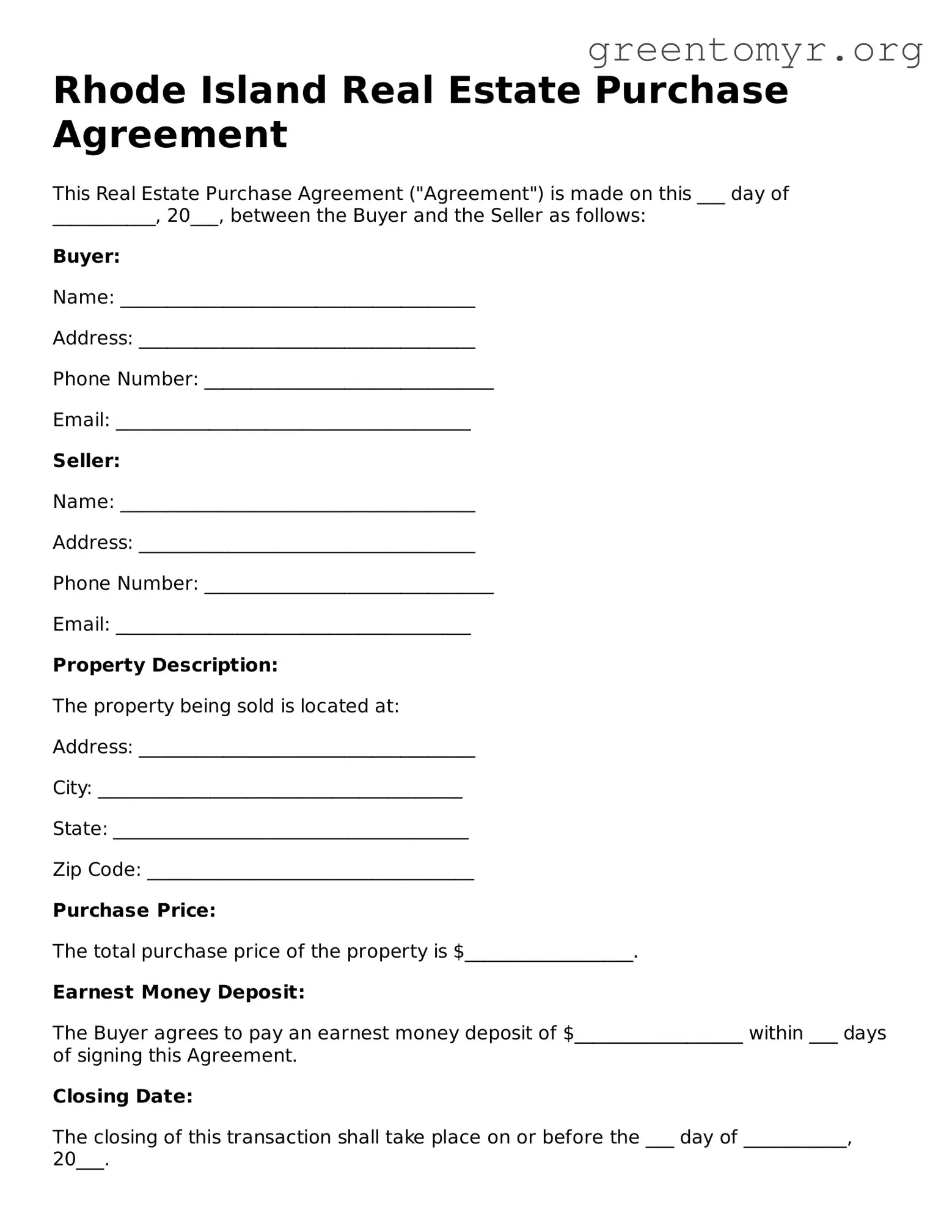Rhode Island Real Estate Purchase Agreement
This Real Estate Purchase Agreement ("Agreement") is made on this ___ day of ___________, 20___, between the Buyer and the Seller as follows:
Buyer:
Name: ______________________________________
Address: ____________________________________
Phone Number: _______________________________
Email: ______________________________________
Seller:
Name: ______________________________________
Address: ____________________________________
Phone Number: _______________________________
Email: ______________________________________
Property Description:
The property being sold is located at:
Address: ____________________________________
City: _______________________________________
State: ______________________________________
Zip Code: ___________________________________
Purchase Price:
The total purchase price of the property is $__________________.
Earnest Money Deposit:
The Buyer agrees to pay an earnest money deposit of $__________________ within ___ days of signing this Agreement.
Closing Date:
The closing of this transaction shall take place on or before the ___ day of ___________, 20___.
Contingencies:
This Agreement is contingent upon the following:
- Financing Approval
- Inspection of Property
- Appraisal
- Any other conditions agreed upon
Property Condition:
The property is being sold in "as-is" condition, unless otherwise specified herein.
Disclosure:
The Seller must comply with all state-specific laws regarding property disclosures.
Signatures:
In witness whereof, the parties have executed this Agreement as of the date first above written.
Buyer Signature: __________________________________ Date: _______________
Seller Signature: __________________________________ Date: _______________
